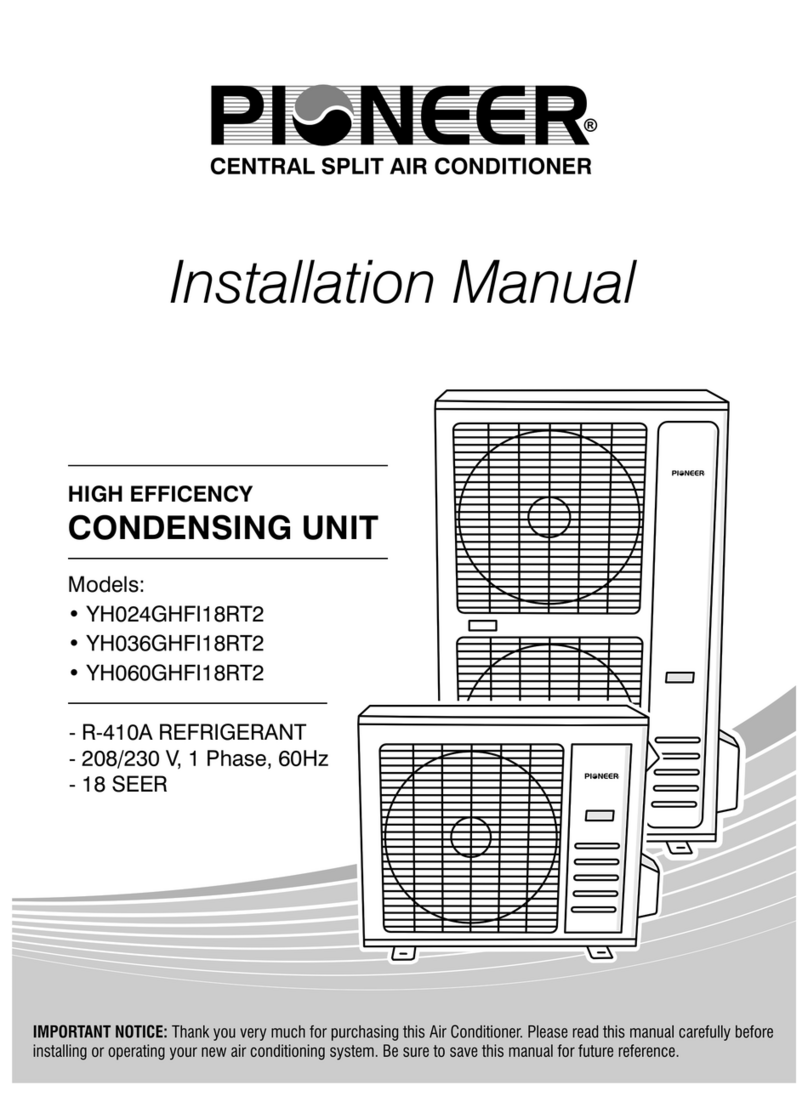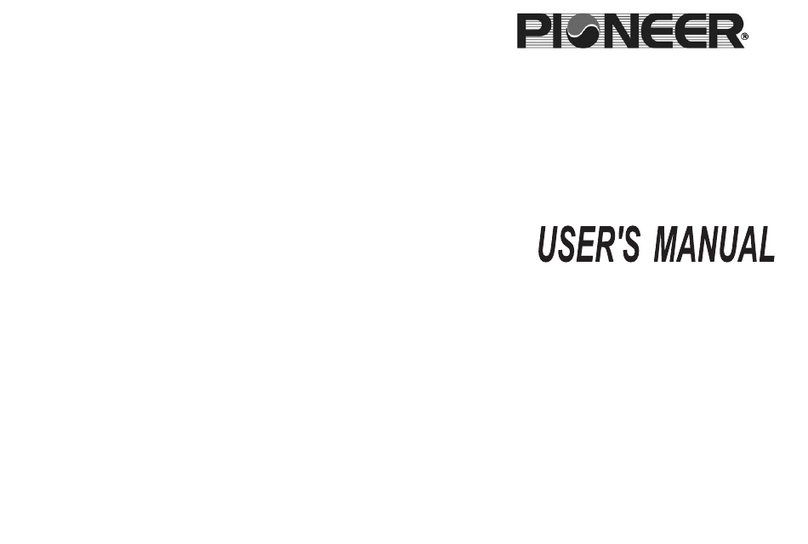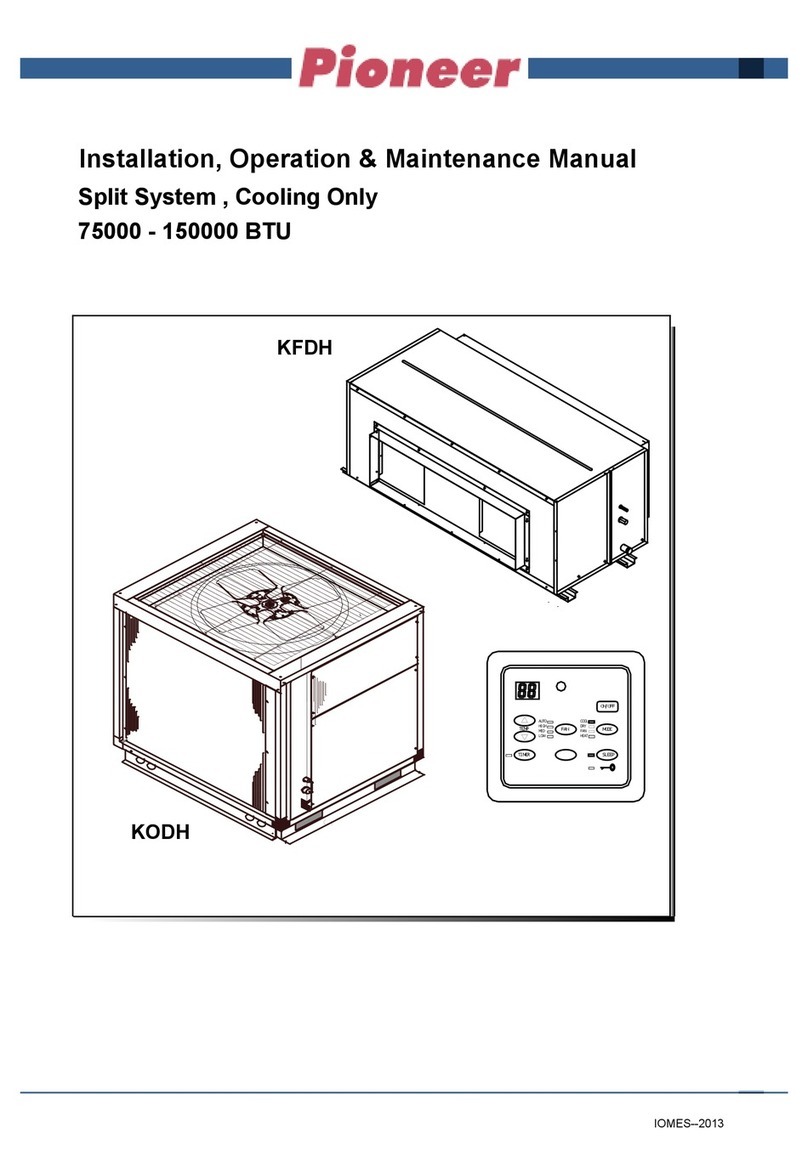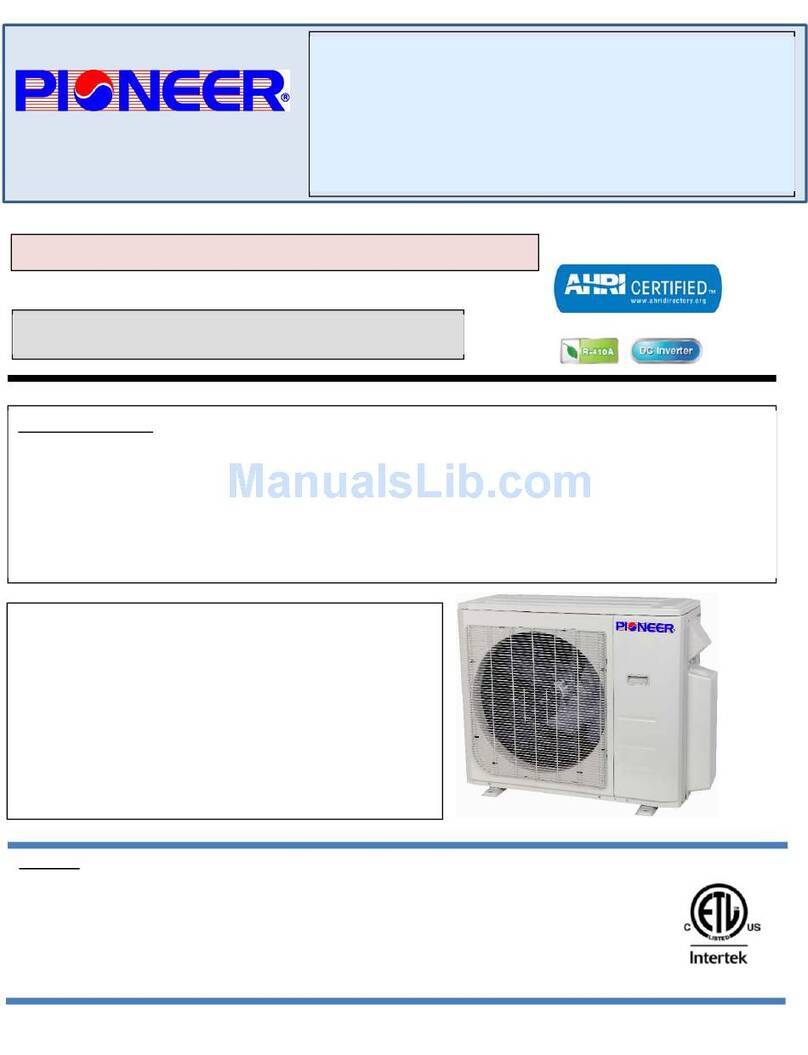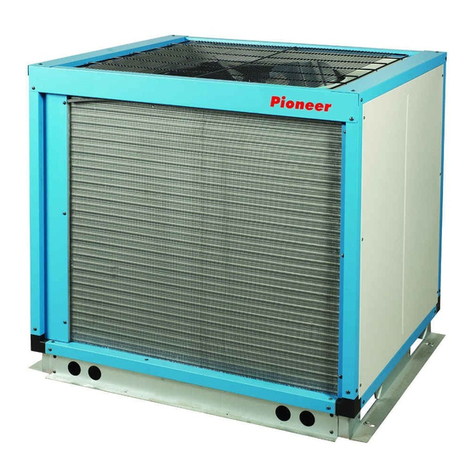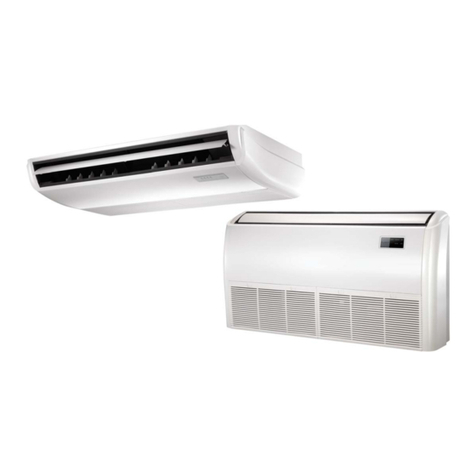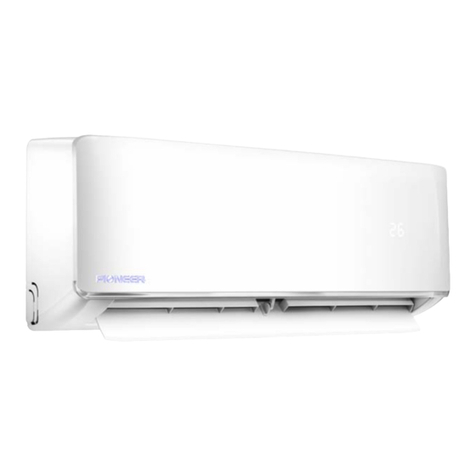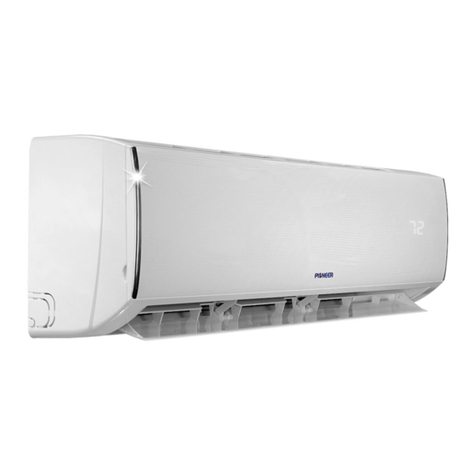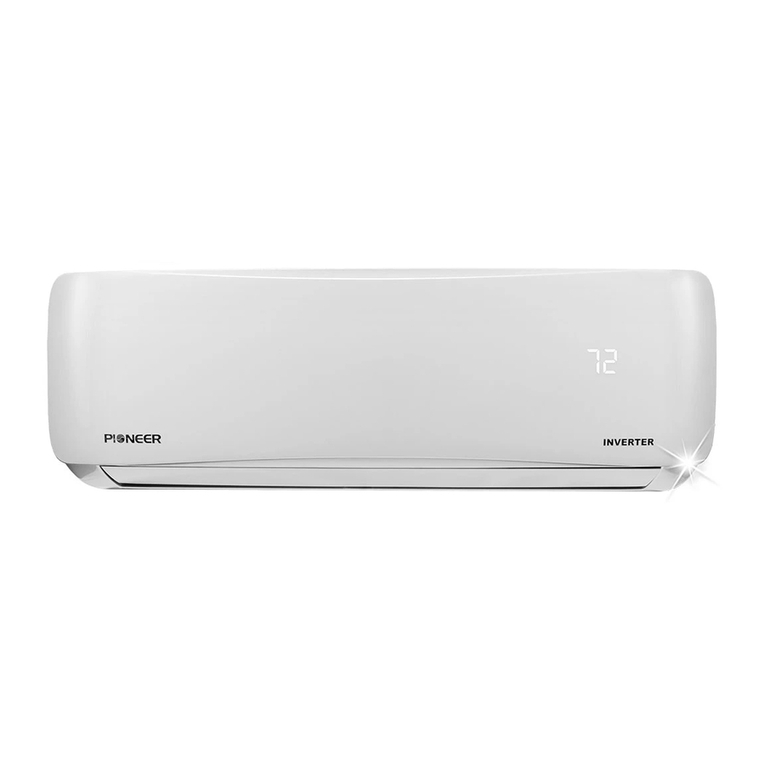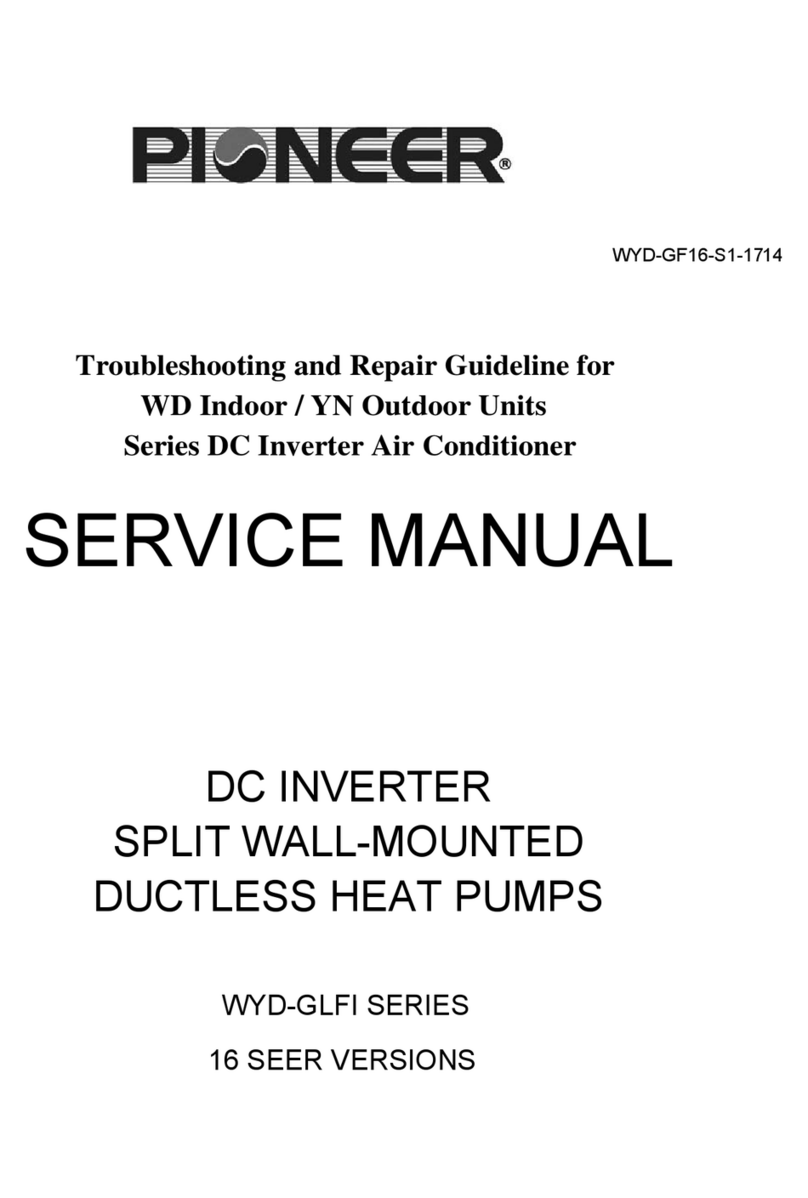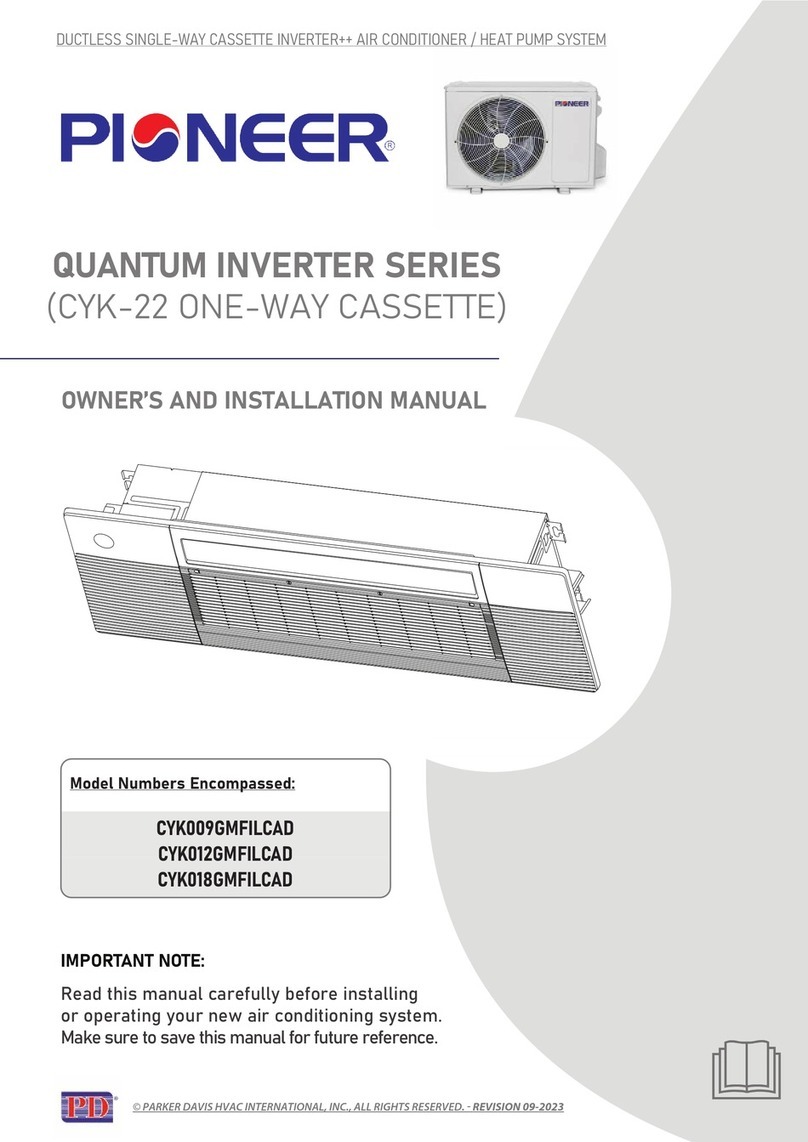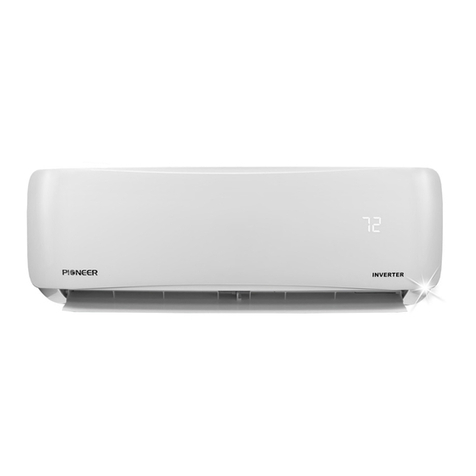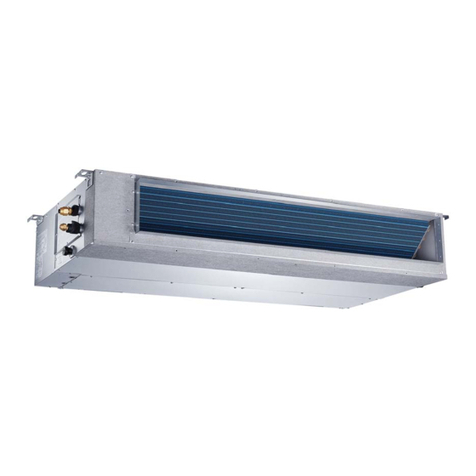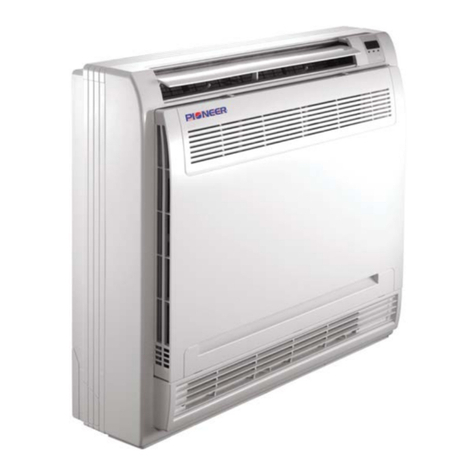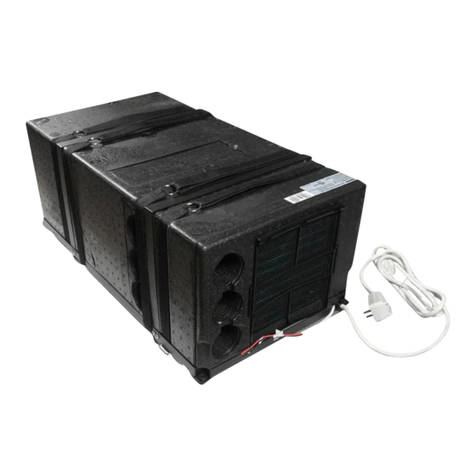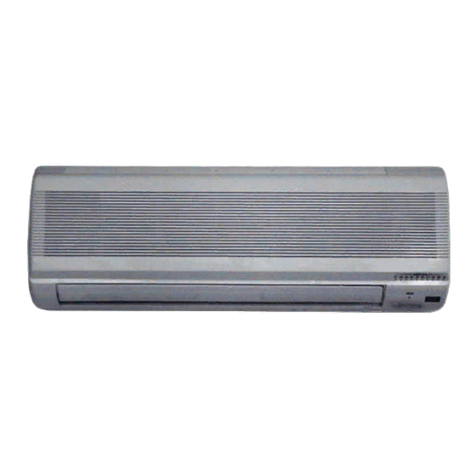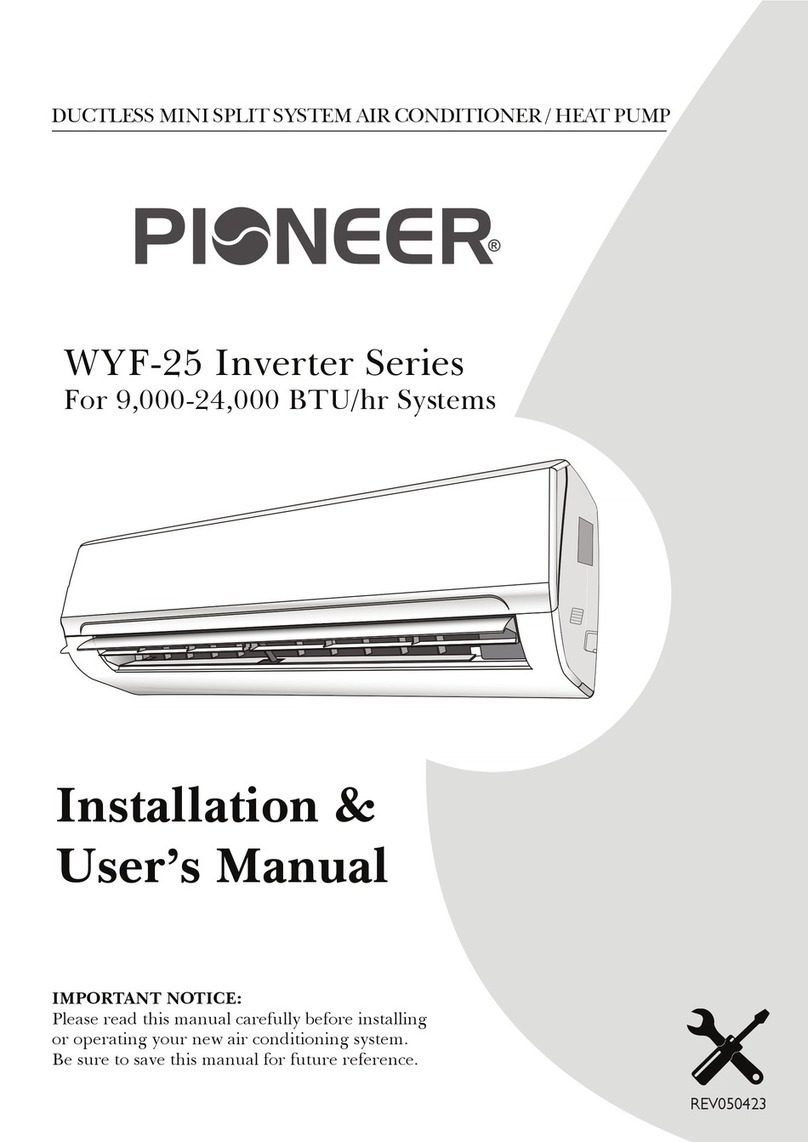
Air Conditioner Service Manual
9
temperature is set temperature and keep.
When selecting HEATING operation with SLEEP mode, the set temperature will be dropped
by 1℃1 hour later and 2℃2 hours later, after 3 hours, the set temperature will be dropped by
3℃and keep 2 hours.And then the temperature is Set-2℃, after 1 hour, the temperature is
set temperature and keep.
6. EMERGENCY Operation
When the EMERGENCY Operation switch is pressed, “Beep”a short sound, COOLING mode
is selected, two short sound the HEATING mode selected, and a long sound the unit off of 3s.
During the unit operation in emergency operation, when the unit receive the signal of remote
controller, the unit will operates by remote.
When the remote controller missing, failed or the batteries run down, press the EMERGENCY
Operation switch on front of the indoor unit for function test.
NOTE: Do not press the EMERGEMCY Operation switch during normal operation.
7. AUTO-RESTART Function (Option)
While air conditioner is operating in one mode, all of its operation data, such as working
mode, preset temperature etc. would be memorized into IC by main PCB. If power supply cut off
due to reasons and recover again, the AUTO-RESTART function will set
synchronously and
the air conditioner would work at the same mode as before.
Auto-restart Pre-setting (optional):
IfAuto-restart function is needed, follow the steps below to activate this function:
1) Pulling the air-con's plug out of socket.
2) Pressing and holding the Emergency button (ON/OFF) on the indoor, then insert the plug
into the socket again.
3) Keep pressing the Emergency button for more than 10 seconds until three short beeps
heard, the Auto-restart function been activated.
4) When the unit in operation, press the timer button 10 times in 8s, the Auto-restart
function will be active,if the Auto-restart is active, the Auto-restart off.
8. Water pump control(cassette and duct type)
When the unit operates in cool or dry mode, the water pump operates, once the compressor
off or change to other mode, the water pump stop after 10 minutes.
Anytime, when the unit check the water full, the water pump operates, the unit stop and
display the water full code. When the water full eliminate, the water pump will stop after 10
minutes.
When check the water pump switch open for 8 seconds continuous, enter water full
protection, and check the water pump switch on for 180 seconds continuous, the water full
protection exit.
9. Protection and Failure Display
When protection display is available, controller will show error code, digital LED shows
error code and setting temperature by turns.
If there is more than one failure, it will show error codes according to the error list sequence.
To insure the signal communication of indoor and outdoor unit, any failure code relates to
outdoor unit will remain display for 2 minutes maximum after it’s recovered.
Among all the failure codes, sensor failure can be recovery automatically once it comes normal.
